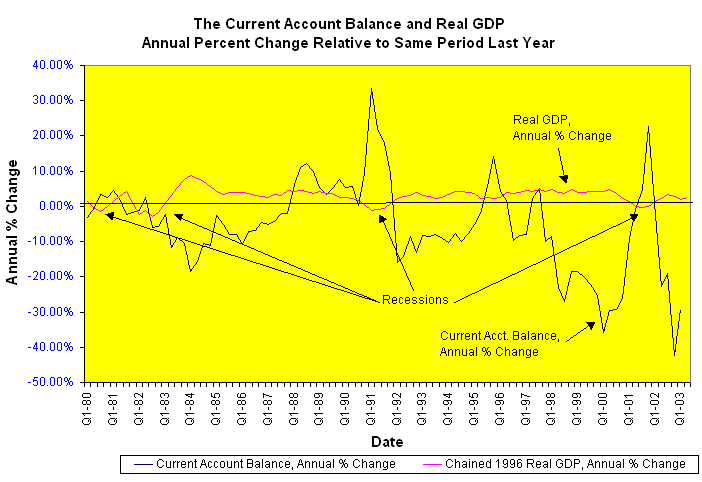Current Account Definition and 4 Components
Post on: 24 Апрель, 2015 No Comment

Definition: The current account is a country’s trade balance plus net income and direct payments. In other words, it measures a country’s imports and exports of goods, services as well as its trade in capital. It is in balance when the people, businesses and government have enough income and savings to fund all purchases, business growth and government infrastructure spending occurring in that country.
The current account is part of a country’s balance of payments. The other two parts are the capital accounts and the financial accounts.
The 4 Current Account Components
The Bureau of Economic Analysis divides the current account into four components: trade, income, direct transfers of capital, and asset income. The goal for most countries is to accumulate capital by exporting more goods and services than it imports (trade balance). It wants to take in more earnings A deficit occurs when a country’s government, businesses and individuals export less goods and services than they import, and they take in less capital from foreigners than they send out.
1. Trade: Trade in goods and services is the largest component of the current account. Therefore, a trade a trade deficit is usually enough to create a current account deficit. That occ occurs when a country imports more goods and services than it exports.
2. Net Income: These are interest and dividend payments to foreigners who own assets in the country, and wages paid to foreigners who work in the country. These include:
- Income earned on foreign assets owned by a country’s residents and businesses. This is usually receipts, such as interest and dividends, earned on investments.
- Income earned by a country’s residents who work overseas.
If the income paid out by a country’s individuals, businesses and government to their foreign counterparts is more than they receive, it contributes to a deficit. On the flip side, the opposite will cut the deficit:
3. Direct Transfers — This includes remittances from workers to and direct foreign aid from governments. Specifically, deficit is increased by these direct transfers:
- Wages sent back to a foreigner’s home country.
- Government grants made to foreigners.
- Direct investments made abroad by a country’s residents.
- Bank loans to foreigners.
As you would expect, the components that reduce the current account deficit are the opposite:
- Money sent back to the country’s families by workers living abroad.
- Direct investments made by foreigners in the country’s assets.
- Grants made by a foreign government.
- Bank deposits held at foreign banks.
4. Asset Income: These are increases or decreases in assets such as bank deposits, securities, real estate and central bank and government reserves. Basically, U.S. assets owned by foreigners add to the deficit. These include:
- A country’s liabilities to foreigners such as deposits of foreign residents at the country’s banks.
- Loans made by foreign banks abroad to domestic banks.
- Foreign private purchases of a country’s government bonds (such as U.S. Treasury securities).
- Sales of the securities, such as stocks and bonds, made by a country’s businesses to foreigners.
- Foreign direct investment. such as reinvested earnings, equities and debt.
- Other debts owed to foreigners.
- Assets, like those described, held by foreign governments.
- Net shipments of the country’s currency to foreign governments.
Again, the opposite will subtract from the deficit: More specifically, this includes:
- Deposits at foreign banks.
- Bank loans to foreigners.
- Sales of foreign-based securities.
- Direct investment made in foreign countries.
- Debts owed to a country’s residents and businesses by foreigners.
- Foreign assets owned by a country’s government.
- A country’s official reserve assets of foreign currency. (Source: Bureau of Economic Analysis, Current Account )














